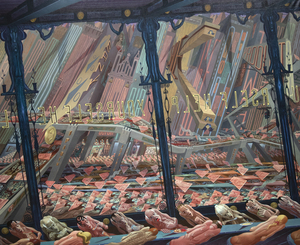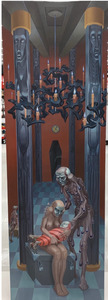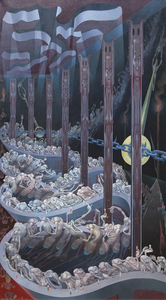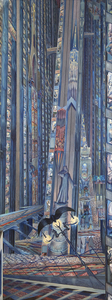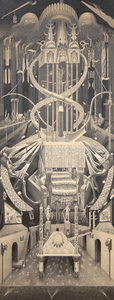The annals of art history are rife with artists of genius who never achieved the repute they deserved during their lifetime. Irving Norman, variously labeled “social surrealist,” “magic realist,” or simply “humanist painter” is among the most deserving of that unceremonious distinction. Undeterred by the portentous mandate to conform to any of the art ‘isms’ that, for Norman, had become empty and meaningless, he worked against the grain of his time. He would produce some of the most potent visual indictments of a contemporary world shaped by war, immoral profiteering, and the nightmarish, dehumanizing elements of modern society. Consider Norman a truly heroic artist. His mantra, “to tell the truth of our time” and to unmask the darker, most nefarious elements of human nature, grew from a spark that lit his life path; his ghastly experiences on the battlefield during the last year of the Spanish Civil War. Those remembrances haunted him forever. Yet they also fueled a life story as riveting as the drawings and paintings that so aptly project his vision. He volunteered to fight in a foreign land and a war he never expected to return from, a degree of sacrifice — the ultimate sacrifice — and it is at the core of understanding Norman and his art. In a sense, his paintings ask some of the same of us. He lived as the hopeful idealist and drew and painted with a clear agenda — to create works from which a viewer could not turn away, hoping for a humanizing effect that could be carried forth.

